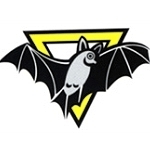11 Squadron (Belgian Air Force)
| 11 Squadron | |
|---|---|
 |
|
| Active | 1 March 1918 |
| Country |
|
| Branch | Air Component |
| Role | Instruction |
| Garrison/HQ | Cazaux Air Base |
| Insignia | |
| Identification symbol |
A bat on a yellow triangle |
| Aircraft flown | |
| Trainer | Dassault Alpha-Jet |
11 Squadron is a training squadron of the Belgian Air Component, deployed at Cazaux Air Base in France, in the scope of the Advanced Jet Training School (AJeTS).
The 11ème Escadrille de Chasse was created March 1, 1918, at Les Moëres aerodrome near Veurne. As the third dedicated fighter squadron of the Aviation Militaire Belge, next to 9ème Escadrille and 10ème Escadrille, it was part of Belgium's first fighter wing, the Groupe de Chasse. The new unit used an insignia that was adopted from Willy Coppens's personal insignia with his consent. The Cocotte is a two dimensional representation of an origami Chicken, and was painted in white on the airplanes. The squadron was equipped with castoff Sopwith Camels from 1ère Escadrille de Chasse as well as a few Hanriot-Dupont 1s, and under command of Commander Paul Hiernaux.
11ème Escadrille de Chasse became operational as a fighter squadron, capable of being included in combined Allied operations, on May 28, 1918. The new escadrille scored its first victory on September 27, 1918. In its short operational career, the squadron claimed twelve wins and was credited with seven verified aerial victories. In turn, it suffered two pilots KIA and one pilot WIA. Its success coincided with the September 1918 Belgian Army advance. To support this advance, 11ème Escadrille moved to Moerkerke near the Dutch border on October 30, 1918
After the armistice, 11 Squadron participated in the occupation of Germany. It operated from Bochum until July 5, 1919, when it was recalled to Sint-Agatha-Berchem, in the outskirts of Brussels, where it is disbanded in August 1919. In March 1920, 11 Squadron was recreated at Sint-Agatha-Berchem, with the same squadron number, insignia and aircraft, augmented by Fokker D-VII aircraft, yielded by the Germans as compensation for damages during World War I. Lieutenant Albert Massaux took command of the squadron. In the following months, the squadron moved up and down to Wilrijk, before returning to Bochum on July 9, 1920. During their stay there, 11 Squadron transformed to Airco DH.4. On January 5, 1922, 11 Squadron moved to Bierset for the first time, only to move to Schaffen at the start of 1923. It was disbanded a second time on February 19, 1923.
...
Wikipedia
